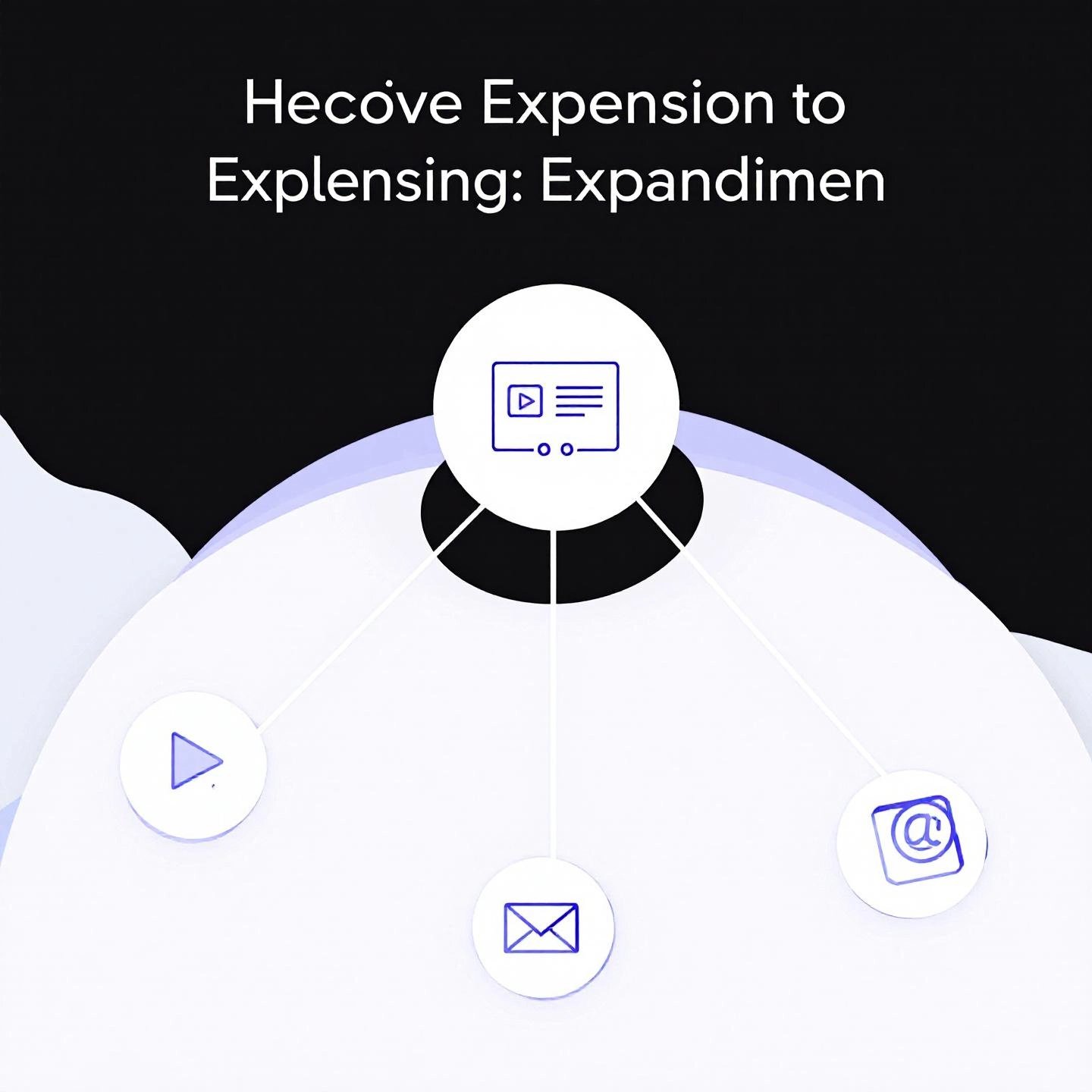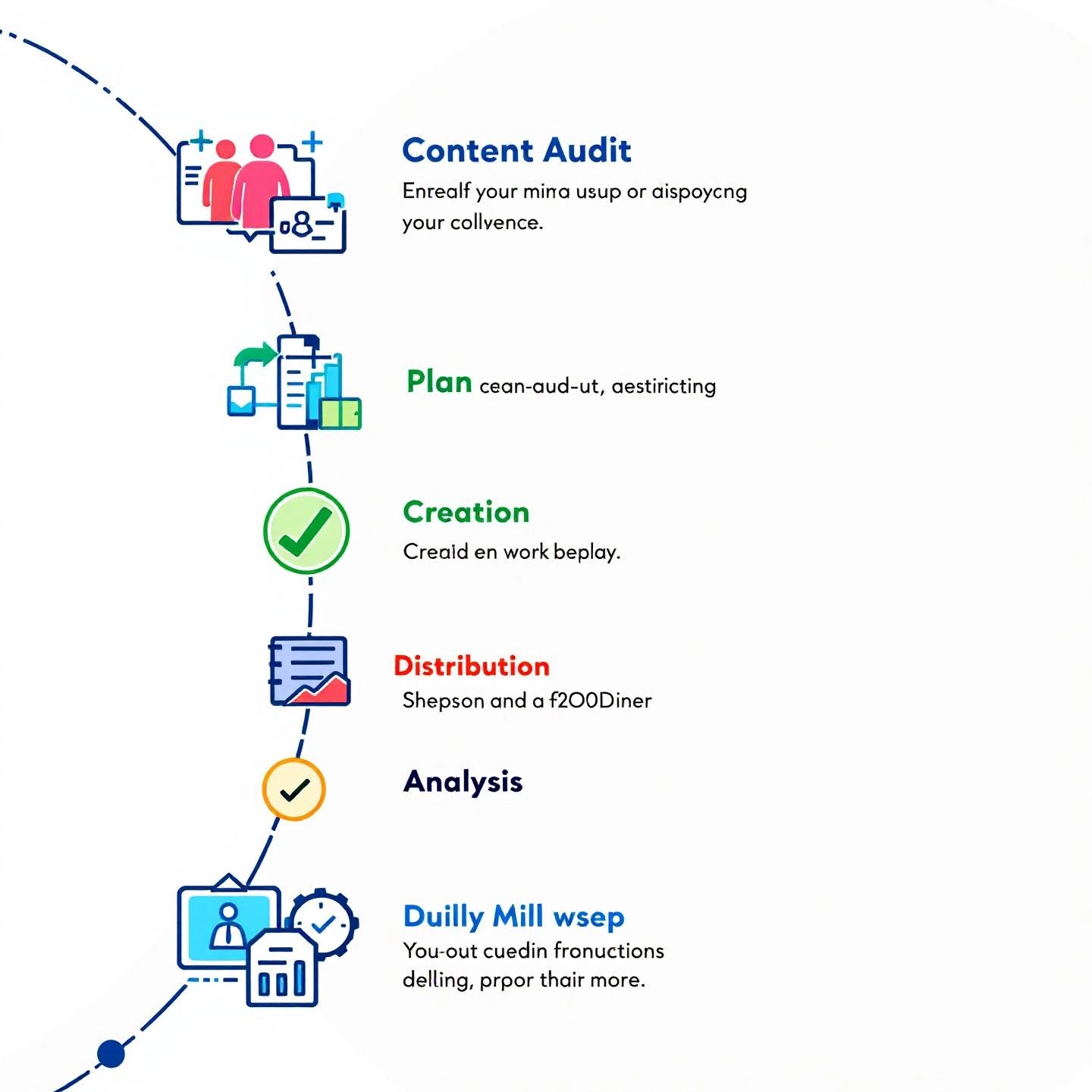Introduction to Repurpose Blog Posts
Ever feel like your best blog posts disappear into the archives too quickly? Imagine if you could breathe new life into your existing articles and reach audiences you never tapped before. That’s where the strategy to repurpose blog posts comes in—a powerful approach that helps modern marketers save time, boost SEO, and amplify their message across multiple channels.
So, what does it mean to repurpose blog content? It’s not just about copying and pasting your old posts. Instead, it’s about transforming your original articles into fresh, engaging formats that suit different platforms and audience preferences. For example, you might turn a blog post into an infographic, a short video, a podcast episode, or a series of social media posts. The goal is to adapt the core ideas and information to fit new contexts, not simply repost the same material.
- Save time and resources: Why start from scratch every time? Repurposing lets you build on what you’ve already created, making your content production more efficient and scalable. You’ll notice you can publish more, with less effort.
- Boost SEO performance: Each new format gives you another chance to target fresh keywords and appear in different search results. Updating or reimagining content also sends positive signals to search engines, helping your site stay relevant.
- Reach new audiences: People consume information in different ways. Some prefer reading, others like visuals or audio. By reworking your content into various formats, you can connect with broader audience segments and reinforce your brand message.
In today’s fast-paced digital landscape, repurposing blog posts is more than a smart hack—it’s a strategic move to maximize the value of your content investments. As you explore this guide, you’ll learn actionable ways to turn your existing articles into high-impact assets that keep working for your business, long after the original post goes live.

The Strategic Value of Repurposing Your Blog Content for Maximum ROI
When you invest time and budget into a well-crafted blog post, wouldn’t you want that investment to work harder for you? Imagine if each article could generate leads, boost traffic, and reinforce your brand across multiple platforms—all without the need to start from scratch every time. That’s the promise of repurposing blog content: it’s a proven path to maximizing your content marketing ROI while streamlining your workflow and reaching new audiences.
Why Repurposing Blog Content Delivers Exceptional Returns
Sounds too good to be true? Let’s break down why this strategy is so effective, especially if you rely on outsourced content creation or have a limited marketing team:
- Saves Time and Resources: Creating fresh content for every channel can drain your resources quickly. Repurposing allows you to leverage existing assets—turning a single blog post into videos, infographics, podcasts, or social snippets. In fact, nearly half of marketers (48%) prefer content repurposing for generating results with minimal time investment.
- Boosts SEO Performance: Every time you adapt a blog post into a new format or update it with fresh insights, you send positive signals to search engines. This keeps your website active and authoritative, helping you rank for a broader set of keywords and maintain topical freshness.
- Reaches Diverse Audience Preferences: Not everyone prefers to read lengthy articles. Some audiences engage more with short videos, others with podcasts or visual graphics. By repurposing, you cater to different learning styles, expanding your reach beyond your blog’s core readership.
- Strengthens Brand Consistency: Sharing your core message across varied platforms ensures your audience encounters a unified brand voice. This repeated exposure builds recognition and trust, reinforcing your authority in your industry.
Real-World Impact: How Repurposing Multiplies Value
Consider this: 94% of marketers are already repurposing their content, and 46% say it delivers the best results compared to creating new material or simply updating old posts. By transforming a single high-performing blog into an email series, a LinkedIn carousel, or a YouTube short, you’re not just recycling—you’re multiplying its impact and lifespan.
Ultimately, repurposing blog content is about working smarter, not harder. It empowers you to maximize your content’s value, optimize your marketing spend, and ensure your brand message resonates wherever your audience is most active. Next, let’s explore how to identify which blog posts are best suited for this high-ROI strategy.
Identifying Prime Blog Posts for Repurposing
Ever wonder which of your existing articles are worth the effort to reimagine? When you want to repurpose blog posts effectively, not every piece is created equal. Choosing the right candidates is the secret to maximizing your impact and saving valuable time. Let’s break down the essential qualities to look for—plus, see some repurpose blog posts examples to spark your next project.
How to Select Blog Posts Ready for Repurposing
Sounds complex? Let’s simplify. Start by asking: "Which posts have already proven their value or have the potential to do more for my brand?" Here’s a checklist to guide your selection process:
- High-Performing ContentPosts that consistently attract traffic, generate leads, or spark engagement are ideal. If your analytics highlight a few star performers, these are low-hanging fruit for repurposing. For example, a blog that drives steady organic visits can be turned into a video or infographic to reach even more people.
- Evergreen TopicsContent that remains relevant over time—think "how-to" guides, industry best practices, or foundational concepts—can be updated and adapted for new formats without losing value. Evergreen posts make excellent candidates because they’re not tied to trends or news cycles.
- Data-Rich or Insightful PostsArticles packed with statistics, research findings, or original insights can be transformed into infographics, charts, or shareable quotes. For instance, a post with survey results might become a compelling social media graphic or a podcast discussion topic (Knowadays).
- Comprehensive Guides and Long-Form ContentIn-depth resources can be broken down into bite-sized formats—like email series, short videos, or social posts. Imagine turning a thorough tutorial into a slide deck or a series of Instagram stories for broader reach.
- Posts on Topics Regaining RelevanceSometimes, industry changes or new trends make older posts timely again. Updating and repurposing these can put your brand back in the conversation.
Repurpose Blog Posts Examples: Inspiration in Action
- Turn a popular "how-to" article into a step-by-step YouTube video.
- Transform a data-driven post into an eye-catching infographic for LinkedIn.
- Break up a comprehensive guide into a week-long email course or social media series.
- Update a previously high-performing post with new insights, then share it as a podcast episode or webinar.
By focusing on these types of content, you’ll ensure your repurposing efforts generate the greatest return. Next, let’s dive into the most effective methods for transforming your chosen posts into fresh, high-impact formats.

Proven Methods to Repurpose Blog Posts Effectively for Social Media and Beyond
Ever wonder how to squeeze even more value from your best articles? When you repurpose blog posts thoughtfully, you can reach new audiences, boost engagement, and make your content work harder—without starting from scratch. But how do you actually transform a blog post into different formats that resonate across platforms, especially for social media or visual-first channels like Instagram?
How to Repurpose Blog Content for Social Media
Imagine you’ve just published a comprehensive guide on your blog. Instead of letting it sit idle, you can adapt its insights into multiple content types tailored for each social network. Here’s how:
- Infographics: Convert data-rich or step-by-step posts into visually compelling graphics. Infographics are highly shareable and make complex information easy to digest, especially on platforms like LinkedIn, Pinterest, and Instagram. For example, highlight key statistics or process steps from your blog in a single image to spark shares and saves.
- Short-Form Videos: Turn key points or tips into quick video clips for Instagram Reels, TikTok, or YouTube Shorts. Short videos grab attention and cater to audiences who prefer visual and auditory learning. For instance, summarize each section of your blog as a 30-second video tip.
- Carousel Posts: Break down your blog’s main ideas into a series of slides for Instagram or LinkedIn. Each slide can feature a tip, stat, or quote—perfect for storytelling and encouraging users to swipe through for more insights.
- Quote Graphics: Pull out compelling statements or statistics from your blog and design them into eye-catching images. These work well for Instagram, Twitter, and Facebook, helping reinforce your brand message and spark conversation.
- Social Media Threads: On platforms like X (formerly Twitter), create a thread where each tweet covers a key takeaway or tip from your blog. Threads allow you to share detailed information in bite-sized pieces and boost engagement with replies and retweets (Sprout Social).
- Instagram Stories & Highlights: Repurpose key insights as story slides, polls, or Q&A sessions. Save the best stories as Highlights for ongoing discovery by new followers.
Expanding Reach with Multimedia Formats
Not everyone consumes content the same way. Some prefer listening, others love visual guides, and many enjoy reading in-depth resources. Repurposing your blog posts into varied formats ensures you connect with all types of learners and audience segments.
- Podcasts: Use your blog as the script or discussion guide for a podcast episode. You can go solo, invite a guest, or even answer audience questions that relate to your blog’s topic. This makes your expertise accessible for listeners on the go.
- Webinars & Live Sessions: Host a live event based on your blog’s content. Walk viewers through the main points, answer questions, and encourage interaction. Afterwards, you can repurpose the recording into shorter video clips or even a podcast episode.
- eBooks & Guides: Combine related blog posts into a downloadable eBook or comprehensive guide. This format works well as a lead magnet and positions you as a thought leader in your field.
- Email Series: Break a long-form blog post into a sequence of actionable emails. Each email can focus on a single tip or insight, keeping your audience engaged over time.
- Slide Decks: Summarize your blog’s content into slides for use on platforms like SlideShare or in presentations. This is especially effective for B2B audiences or educational content.
Repurpose Blog Posts on Instagram: Practical Examples
- Turn a “5 Steps to Success” blog into a carousel, with each slide illustrating one step and a final slide prompting discussion in the comments.
- Extract a surprising statistic and design it as a bold, branded quote graphic for your feed.
- Record a quick Reel explaining one actionable tip from your post, linking back to the original blog in your caption.
- Host an Instagram Live session to dive deeper into your post’s topic, then save the replay as an IGTV video or break it into shorter clips for Stories.
- Use your blog’s FAQ section to create a series of Q&A Stories, encouraging your audience to submit their own questions.
Why Multi-Format Repurposing Works
By adapting your blog posts for different formats and platforms, you increase your brand’s visibility and authority. You’ll reach people who might never read a traditional blog but will watch a video, listen to a podcast, or engage with a carousel. Plus, each new format offers fresh opportunities for engagement, sharing, and SEO.
Ready to take your best content even further? Next, let’s explore the essential tools that can help you streamline and automate your repurposing workflow.
Essential Tools for Streamlining Content Repurposing
Ever feel overwhelmed by the sheer number of formats and platforms you need to cover when you repurpose blog posts? Imagine if you could automate the heavy lifting—turning a single article into videos, infographics, podcasts, and social media posts in just a few clicks. That’s where repurpose AI and modern content repurposing tools come in, making the process faster, smarter, and more scalable for businesses of any size.
Why Use AI-Powered Content Repurposing Tools?
Sounds complex? With the right tools, it’s surprisingly simple. AI-driven platforms can analyze your content, suggest the best formats for different channels, and even automate design or video editing. You’ll save valuable time, maintain brand consistency, and reach wider audiences without the usual manual grind. Plus, analytics features help you track what’s working, so you can optimize your strategy on the fly (Netguru).
Comparing the Best Content Repurposing Tools
Here’s a quick comparison of leading tools across key categories—design, video, audio/transcription, and social media management. Each tool excels at a unique workflow, so consider your team’s needs and content priorities:
| Category | Tool Example | Best For | Key Features |
|---|---|---|---|
| AI Blog Repurposing & Writing | BlogSpark | Automated blog post generation, SEO outlining, multi-format export | AI-powered content creation, keyword discovery, brand voice customization, direct platform integrations |
| Video Repurposing | Repurpose.io, Vidyo, Munch | Turning long-form videos into short clips for social media | Resize videos, auto-generate captions, templates, multi-platform posting |
| Design & Infographics | Canva Magic Switch, Piktochart, Content Drips | Transforming text into infographics, carousels, and social graphics | Templates, one-click resizing, brand asset management |
| Audio & Transcription | Wavve, ElevenLabs | Turning blogs or podcasts into audio clips or lifelike voiceovers | AI-generated audio, auto-transcription, waveform animations |
| Social Media Management | FeedHive, Typefully | Reposting, scheduling, and analytics for repurposed content | Content recycling, post optimization, cross-platform scheduling |
| eBook & Document Repurposing | Designrr | Turning blogs, podcasts, or videos into eBooks and PDFs | Import from multiple sources, AI transcription, flipbook creation |
Choosing the Right Tool for Your Repurposing Workflow
- If your focus is scaling blog content creation and maintaining SEO consistency, BlogSpark stands out as a comprehensive AI-powered solution that streamlines everything from ideation to publishing.
- For video-centric brands, Repurpose.io and Vidyo automate multi-platform video editing and posting, while Canva Magic Switch and Piktochart are top picks for visual storytelling.
- Looking to reach audio audiences? Wavve and ElevenLabs transform written posts into engaging podcasts or audio snippets.
- Need to manage, schedule, and analyze your repurposed posts? FeedHive and Typefully offer robust social media management and analytics.
Most of these tools offer free trials, so you can experiment and find the best fit for your workflow. As you integrate these solutions, you’ll notice your content stretches further and your team’s productivity soars. Next, let’s map out a workflow to seamlessly incorporate repurposing into your ongoing content strategy.

Developing a Workflow for Repurposing
Ever feel like content repurposing sounds overwhelming? When you’re juggling multiple channels, formats, and goals, it’s easy to get lost in the process. But a clear, actionable repurpose blog posts workflow can turn chaos into consistency—and help you get the most from every article you create.
Building a Seamless Content Repurposing Workflow
Imagine turning one high-performing blog post into a dozen fresh assets—without burning out your team. Here’s how to make it happen, step by step:
- Conduct a Content AuditStart by reviewing your existing blog library. Identify high-performing, evergreen, or data-rich posts that have the potential for a second life. Use analytics tools to pinpoint which articles drive the most traffic, engagement, or conversions. Look for content that’s still relevant and aligns with your current goals.
- Strategic PlanningDefine clear objectives for your repurposed content. Are you aiming to boost brand awareness, drive leads, or expand into new channels? Map out which formats (videos, infographics, carousels, podcasts) and platforms (LinkedIn, Instagram, email, YouTube) best fit your goals and audience preferences. Create a content calendar to schedule repurposed assets for maximum impact.
- Creation & AdaptationTransform your chosen blog posts into new formats. This could mean scripting a podcast episode from a how-to article, designing infographics from data-driven posts, or breaking down a guide into a social media series. Tailor each asset to the unique style and requirements of its target platform, ensuring the message remains consistent but the presentation feels fresh (GainApp).
- Distribution & PromotionPublish your repurposed content across selected channels, using scheduling tools to automate releases and maintain a steady presence. Consider staggering your distribution to avoid overwhelming your audience and to keep your content calendar full. Promote each asset strategically—what works on LinkedIn might need a tweak for Instagram or email.
- Performance Tracking & OptimizationMonitor the performance of your repurposed assets using analytics. Track metrics like reach, engagement, traffic, and conversions to measure effectiveness. Use A/B testing to refine headlines, visuals, or formats. Continuously optimize your strategy by doubling down on what works and iterating on what doesn’t.
Tips for a Sustainable Repurposing Workflow
- Standardize your workflow so it’s easy for your team to follow and repeat.
- Leverage automation tools to streamline repetitive tasks, from scheduling to analytics.
- Stay flexible—adapt your plan as audience preferences and platform algorithms evolve.
By following this workflow, you’ll notice your content marketing efforts become more efficient and impactful. Next, let’s discuss how to measure the real ROI of your repurposed content and ensure every asset is pulling its weight.
Measuring Content Repurposing ROI
When you invest time and creativity to repurpose blog posts, how do you know if your efforts are truly paying off? Sounds complex? It doesn’t have to be. By focusing on the right metrics and using simple tracking techniques, you can clearly see which repurposed content delivers the most value—and where you can improve.
Which Metrics Matter Most for Measuring Content Repurposing ROI?
Imagine launching a new infographic, video, or email series based on a top-performing blog post. To measure success, keep an eye on these essential metrics:
- Reach & VisibilityTrack total impressions, unique page views, and the number of new audiences reached. Look at how your repurposed content spreads across social channels or drives visitors to your site.
- Engagement RatesMonitor likes, comments, shares, saves, click-through rates, and average time on page. High engagement signals your new format resonates with the audience.
- SEO PerformanceCheck for new keyword rankings, increased referral traffic, and backlinks generated by your repurposed assets. Each new format can help you target additional search terms and boost domain authority.
- Lead Generation & ConversionsMeasure how many new leads, email sign-ups, or direct conversions are attributed to your repurposed content. Compare conversion rates across different formats to see what works best.
Practical Tips for Tracking and Optimizing Repurposed Content
- Use Analytics Tools: Platforms like Google Analytics, native social media insights, and email software provide detailed performance data. UTM parameters can help you attribute results to specific repurposed assets.
- Segment by Format and Channel: Compare how videos, infographics, or carousels perform on different platforms. This reveals which formats deliver the highest ROI for your audience.
- Monitor Before-and-After Metrics: Track changes in traffic, engagement, and conversions before and after repurposing. This helps you pinpoint what’s driving results.
- Calculate ROI: Use a simple formula: (Value Generated − Cost of Repurposing) ÷ Cost of Repurposing × 100. Value can include revenue, leads, or increased engagement, depending on your goals.
- Iterate and Refine: Use your findings to adjust your strategy—double down on high-performing formats and tweak or retire those that underperform.
By consistently measuring these metrics, you’ll not only prove the impact of your repurposing strategy but also uncover new ways to stretch your content further. Up next, let’s wrap up with the key takeaways and how to amplify your overall content strategy.

Amplify Your Content Strategy
When you look at your blog archive, do you see a library of untapped opportunities? Imagine if every post—old or new—could keep driving results long after its original publish date. That’s the promise of a smart content repurposing strategy: you maximize your ROI, save time and resources, and continually expand your reach without reinventing the wheel.
Why Repurposing Blog Posts Is a Game-Changer
- Maximize ROI: Each article you create becomes a multi-use asset, multiplying its impact across channels and formats. Instead of letting valuable insights fade, you breathe new life into them—earning more traffic, leads, and brand awareness from every piece.
- Save Resources: Building content from scratch is time-consuming and costly. Repurposing lets you leverage existing strengths, freeing up your team for strategy and innovation instead of endless production cycles.
- Expand Your Reach: Different audiences prefer different formats—some love podcasts, others visuals, and many still read blogs. By adapting your content, you meet your audience where they are and keep your message consistent across every touchpoint.
- Enhance Brand Consistency: Repeating your core themes in fresh ways reinforces your authority and builds trust, making your brand more memorable and respected in your niche.
See Your Blog as a Lasting Asset
When you shift your mindset from “one-and-done” to “evergreen and evolving,” you’ll notice your content library becomes a strategic asset. Each post is a foundation for new conversations, formats, and campaigns. The more you repurpose, the more agile and impactful your marketing becomes.
Ready to Scale? Partner with BlogSpark
If you’re looking to take your content repurposing strategy to the next level, consider partnering with experts who understand every nuance of the process. BlogSpark offers advanced AI-powered solutions to streamline, automate, and scale your repurposing workflow—so you can focus on strategy and growth, not repetitive tasks. Imagine transforming your best posts into high-impact assets, consistently and efficiently.
Don’t let your content’s value stop at the first click. Start seeing every blog post as a springboard for ongoing results—and let BlogSpark help you turn your vision into a sustainable, scalable reality.
FAQs about Repurposing Blog Posts
1. Is repurposing content illegal?
Repurposing your own blog content is completely legal and a smart marketing strategy. It involves transforming your original articles into new formats to reach wider audiences and improve SEO. However, always avoid using others' work without permission and ensure your repurposed content maintains originality and value.
2. Should you delete old blog posts?
It's usually better to update or repurpose old blog posts rather than delete them. Updating keeps your site relevant and authoritative, while repurposing can turn dated content into fresh assets for new platforms. Only remove posts if they no longer align with your brand or are irrelevant to your audience.
3. How can I repurpose blog posts for social media?
You can transform blog posts into infographics, short-form videos, carousel posts, quote graphics, or email series for platforms like Instagram, LinkedIn, and Twitter. This approach helps you reach new audiences and increases engagement by tailoring content to each platform's style and audience preferences.
4. What are the best tools for content repurposing?
Top tools include BlogSpark for AI-powered blog and multi-format content creation, Repurpose.io and Vidyo for video editing, Canva and Piktochart for infographics, and FeedHive for social media scheduling. These tools streamline workflows and automate repetitive tasks, so you can focus on strategy and creativity.
5. How do I measure the ROI of repurposed content?
Track metrics like reach, engagement, SEO performance, and conversions. Use analytics tools to compare before-and-after results, segment by format and channel, and calculate ROI based on value generated versus repurposing costs. Continuous tracking lets you optimize your strategy for better results.




